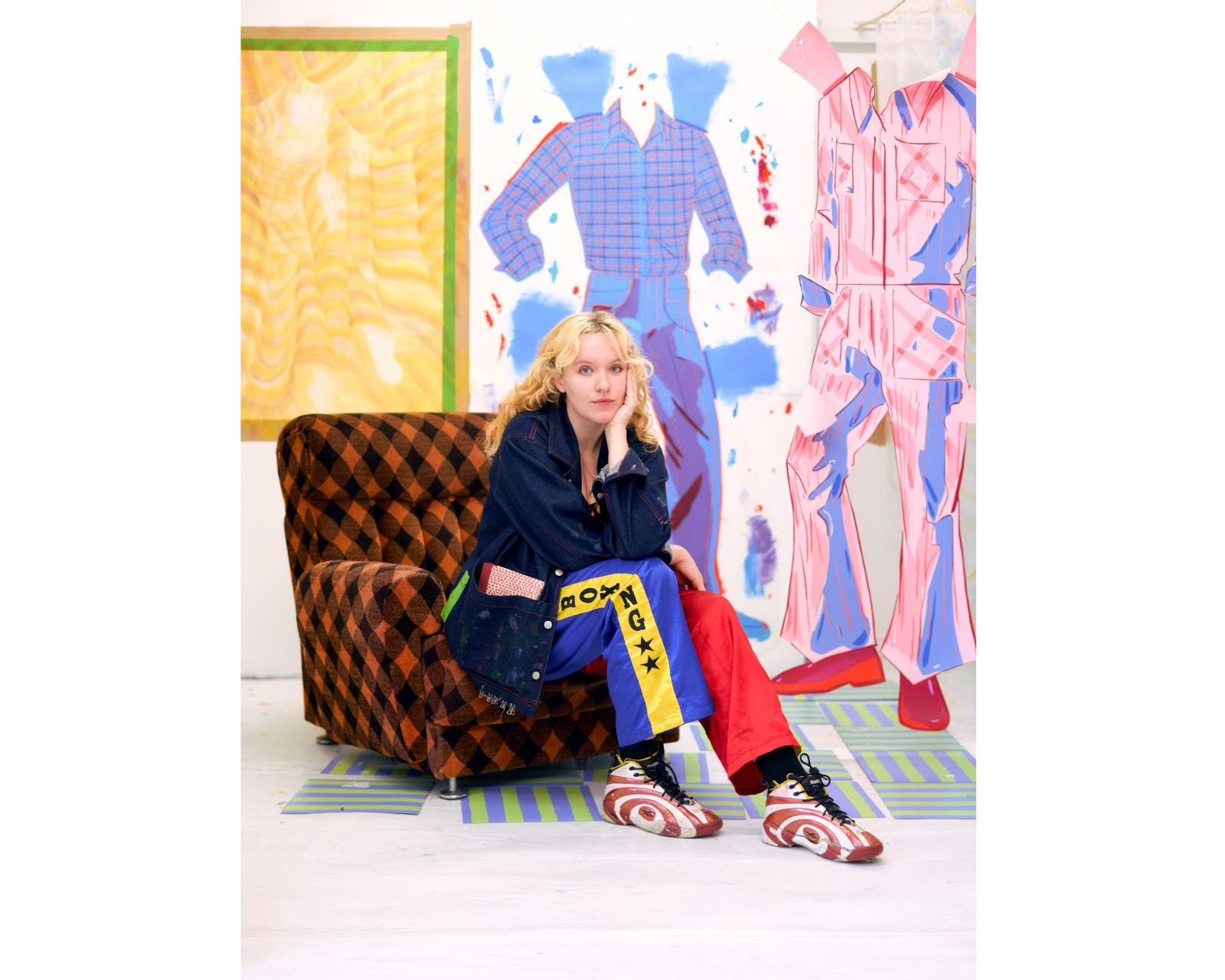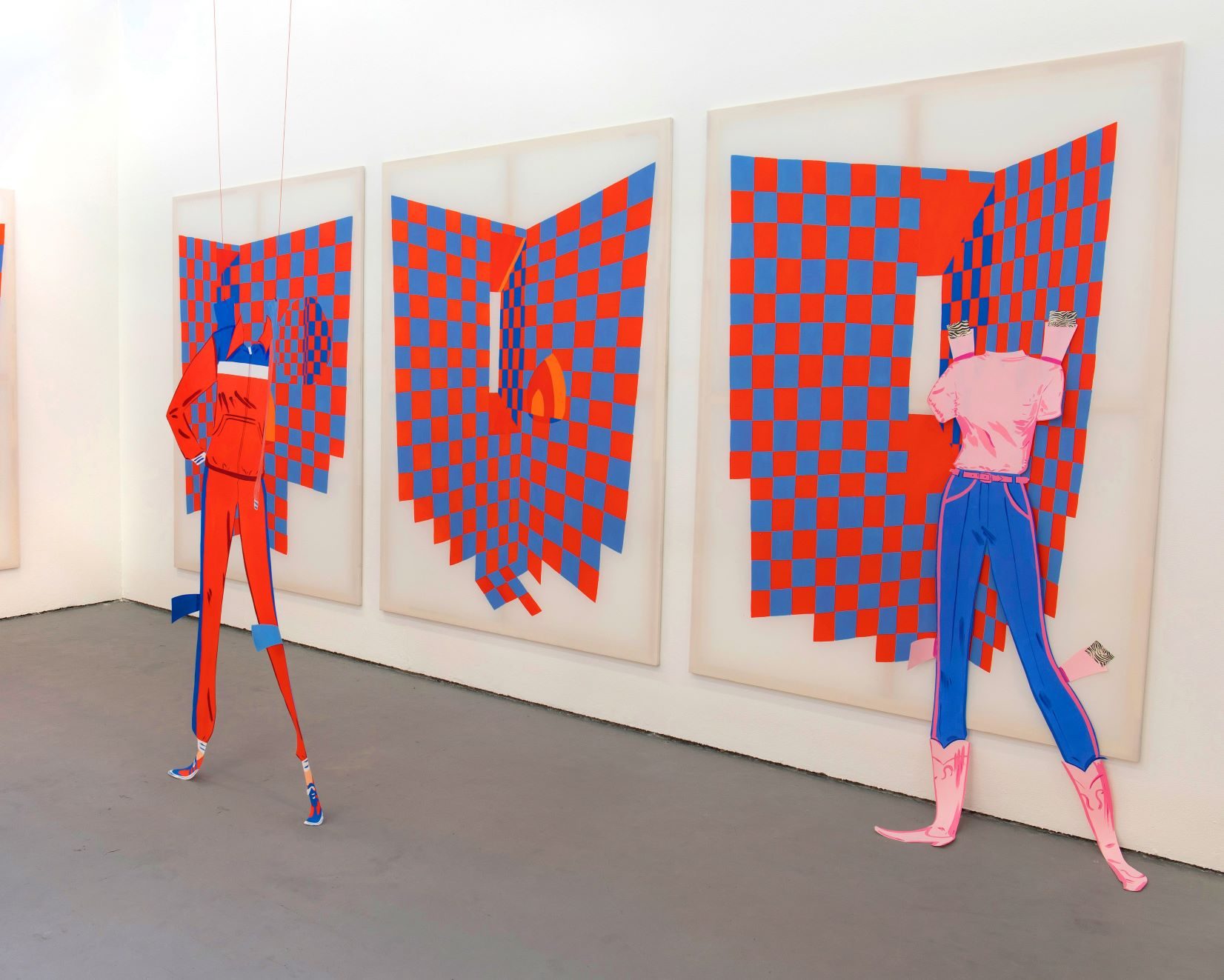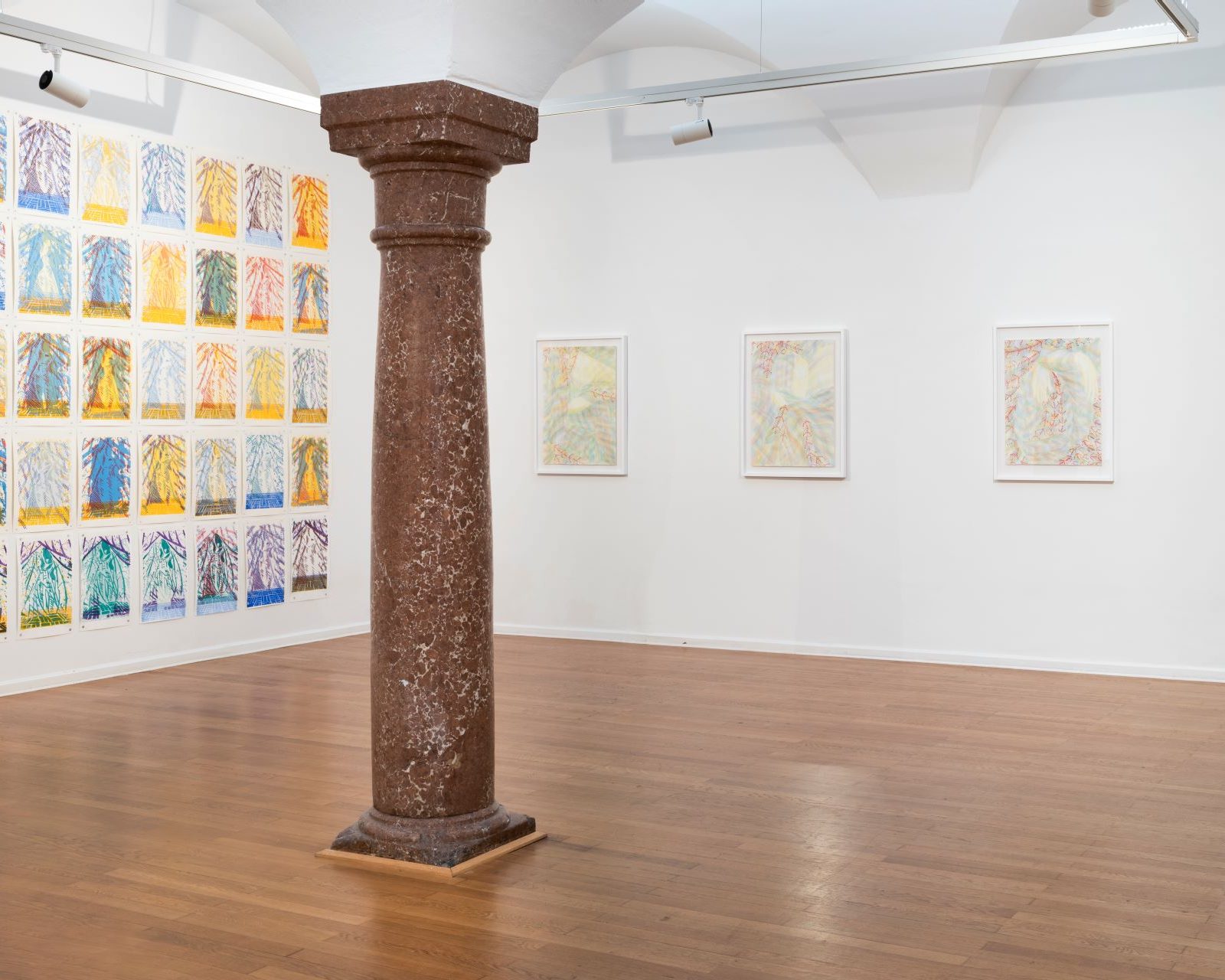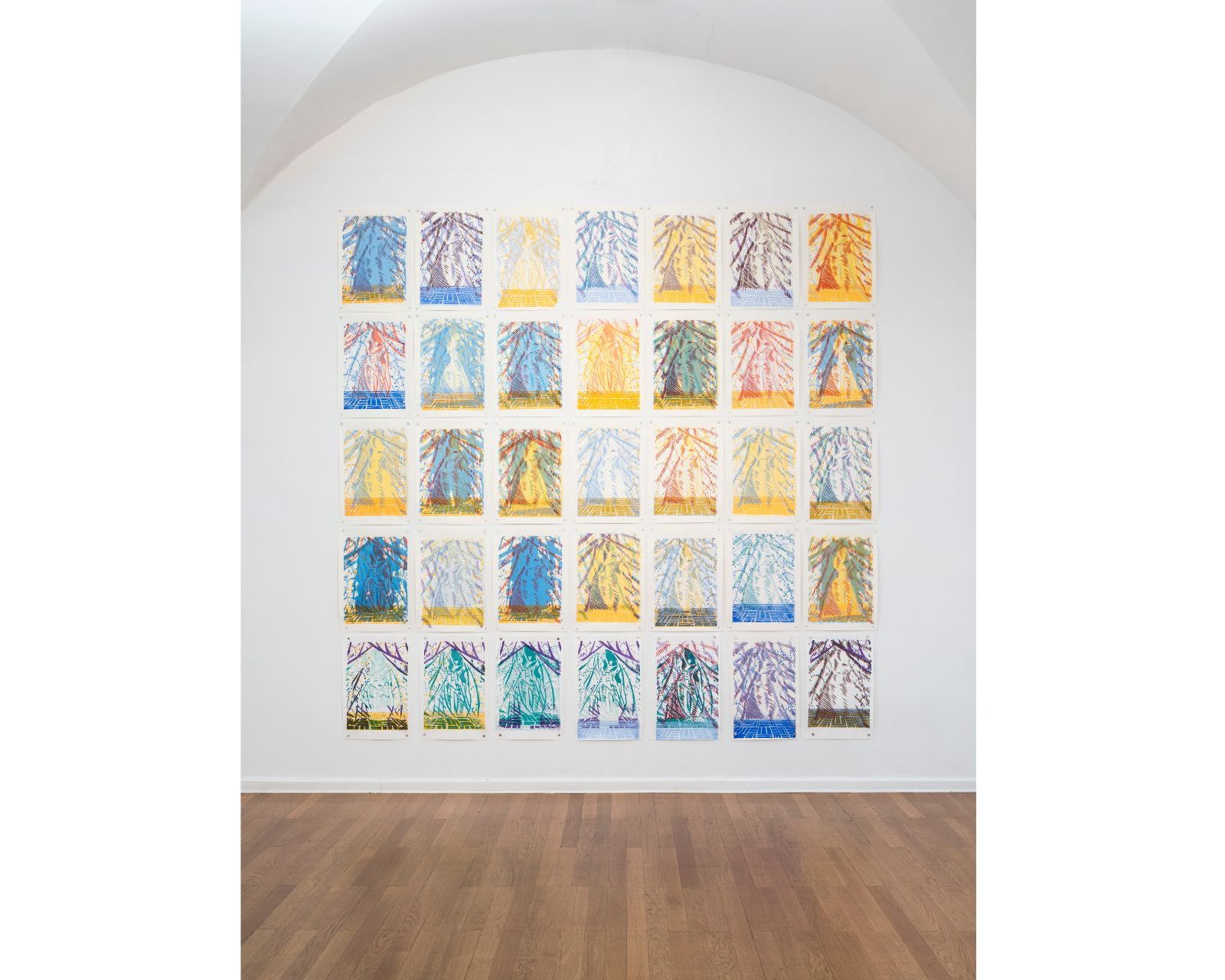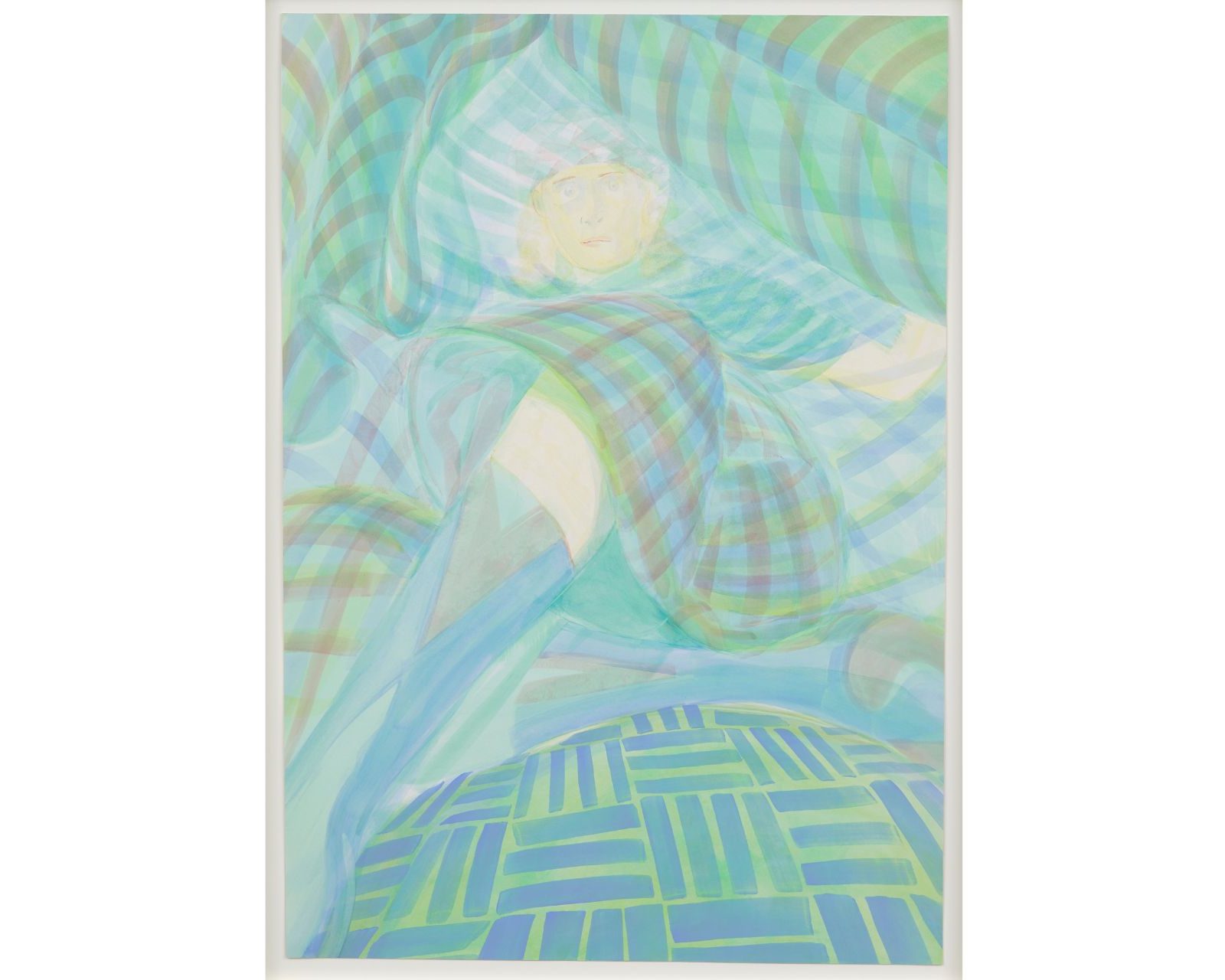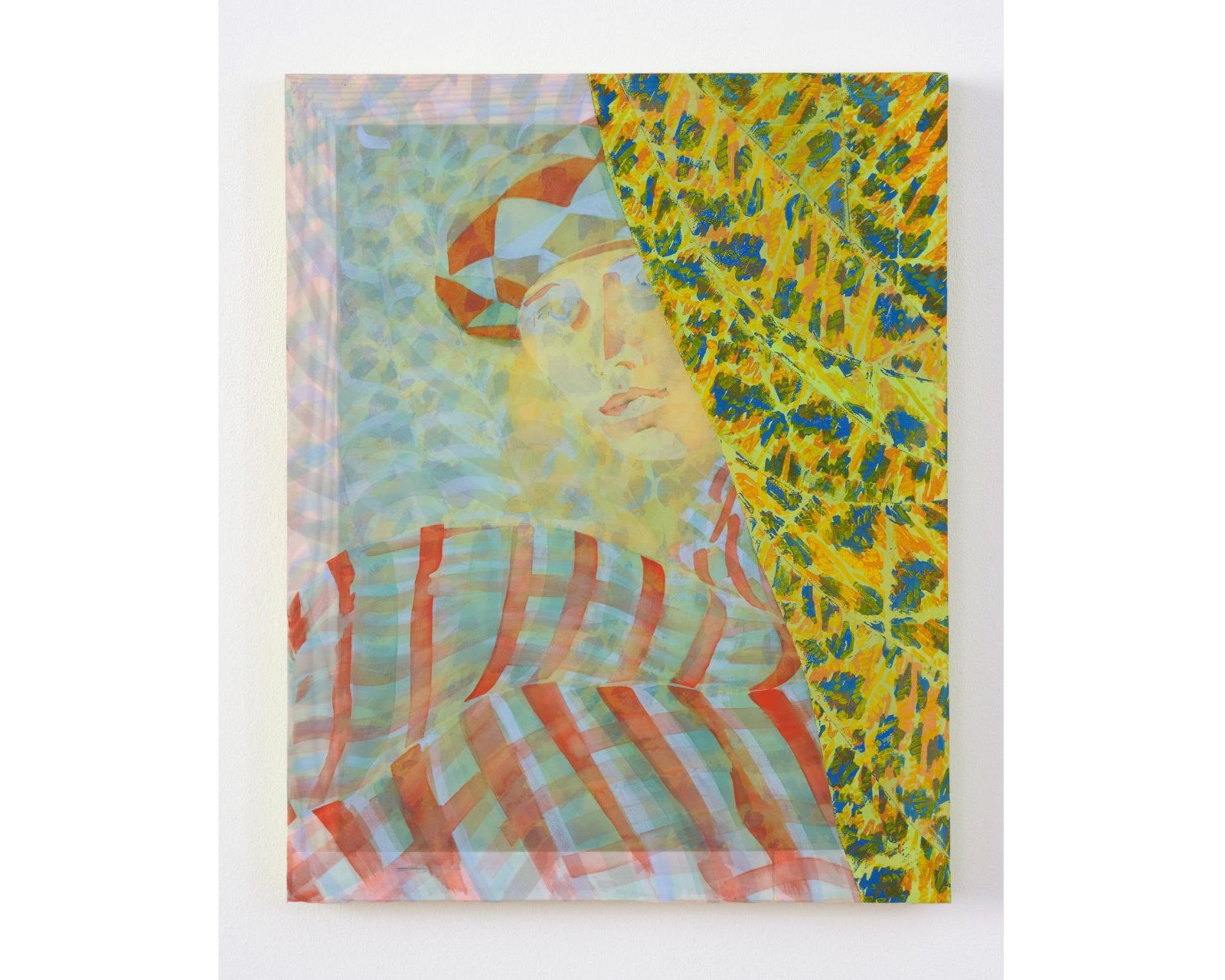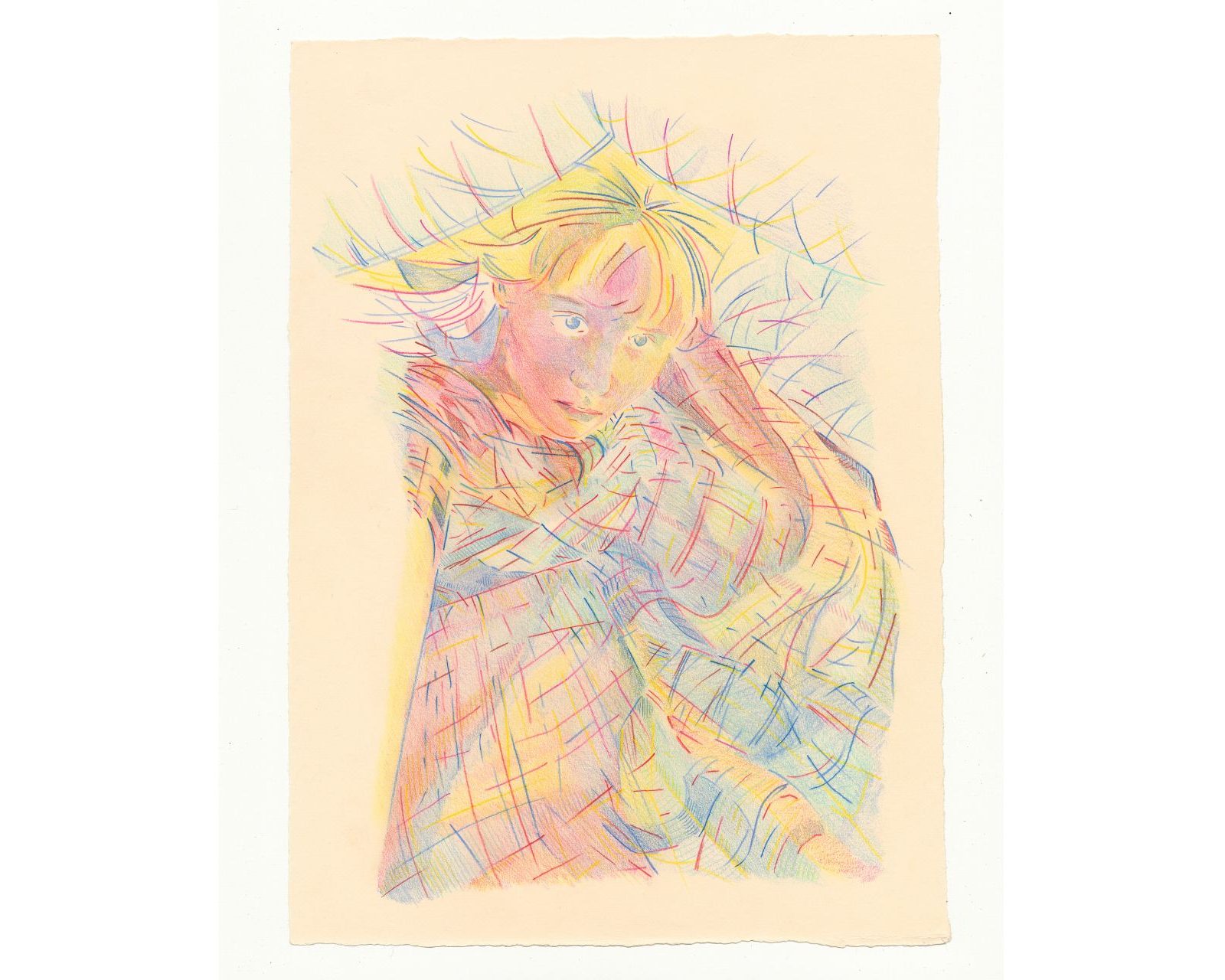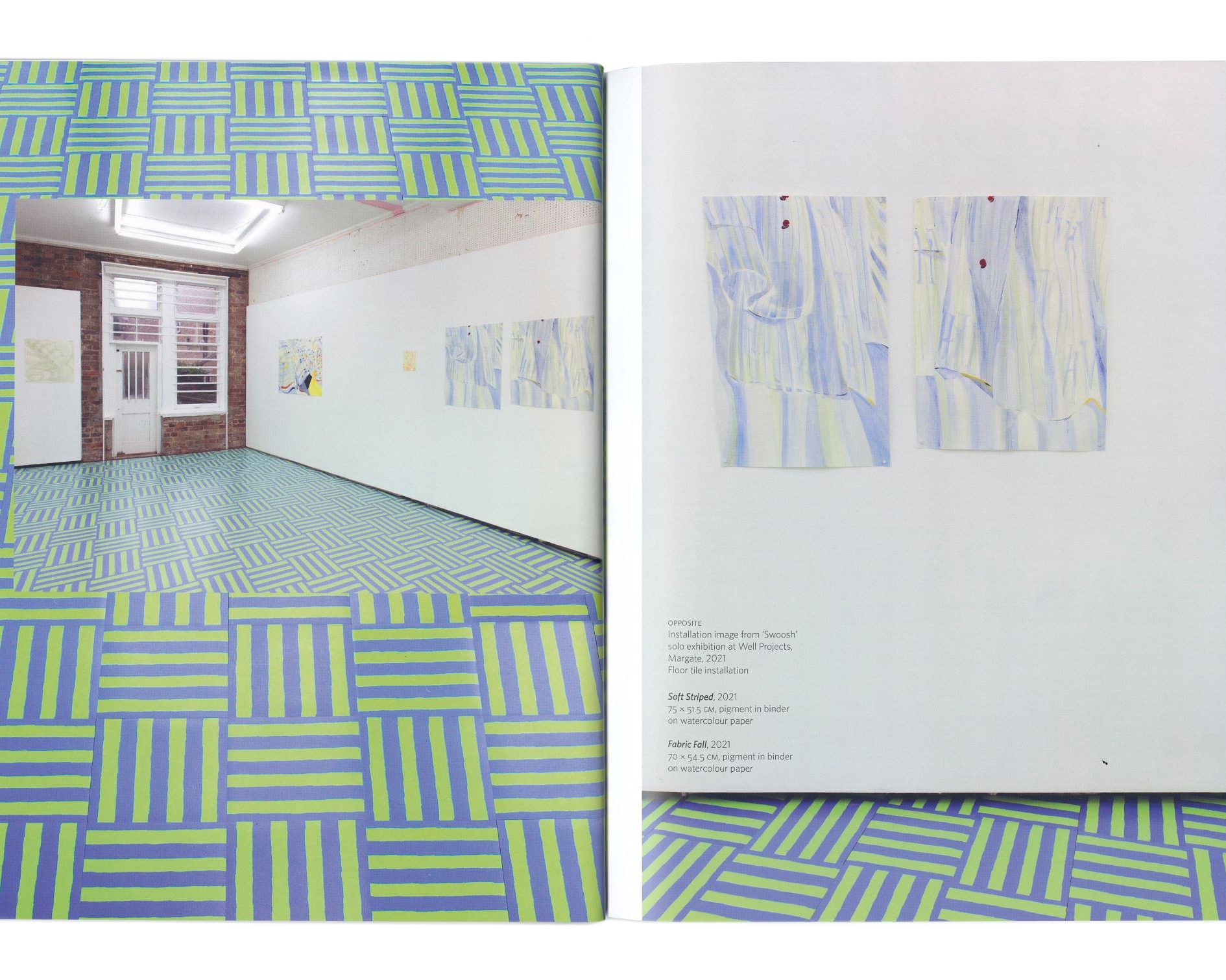“Swooshing perpetually, like a river unfolding in front of us”
09. September 2025
Vannina Horbas
The London-based artist Hannah Tilson shares how hand-mixed pigments, patterns, and music shape her multilayered worlds, revealing fluid and shifting identities
Hannah Tilson is a British artist whose paintings and prints unfold through repetitive patterning and multiple layers of colour, intricately interwoven into one another. Her practice explores the shifting boundaries of the self and the extent to which identity is constituted through external ascriptions. Tilson‘s works are currently on view at kura-t Kunstraum Traklhaus in Salzburg, in collaboration with Otis Blease.
Vannina Horbas: You studied at the Slade School of Fine Art, spent an exchange semester at the New York Studio School, and completed a scholarship at the Royal Drawing School. How did these experiences shape your artistic development?
Hannah Tilson: At the Slade, I began exploring large-scale, immersive environments – making cut-out doll figures and painting patterned architectural spaces. I also built lasting friendships with my studio mates and loved working in the hustle and bustle of central London. The exchange in New York taught me the importance of maintaining a proper studio routine, and it was inspiring to experience the freedom of living and working there. The Royal Drawing School marked a turning point: I began painting figures, including myself, and first learned to make distemper paint from raw pigments – a process that has since become central to my practice. You mix your own paints from raw pigments and binders to control transparency and intensity.
VH: What drives you to mix your paint from scratch, and how does it affect your paintings?
HT: By mixing my own colours, I can completely control translucency and opacity while preserving the same intensity of colour. This lets me build veils of luminous colour that glow and breathe, almost like stained glass windows. The colours remain true to their raw state, unlike oils, which often darken over time. The process is hands-on – I scratch through layers, stamp patterns, and allow the pigments to surprise me. There’s always a moment when I see colours ’singing‘ together, like jewels, and then I know I’m on the right track. I also love how this connects me to materials that could have been on someone’s shopping list 300 years ago.
VH: In the exhibition at Traklhaus you and Otis Blease mostly show prints and drawings. Do you prefer these techniques to painting?
HT: Each process feeds into the other. Printmaking allows me to explore colour combinations with complete freedom – colours clash, hum, and vibrate in ways that feel electric. Pencil drawings let me layer soft and hard marks rhythmically. Painting, by contrast, is slower and more layered, almost like breathing with the work. The luminosity of pigment builds gradually through veils of colour. I don’t prefer one medium over the other – it’s the tension between them that excites me.
VH: How did your interest in incorporating the aesthetics of fabrics into your paintings develop, and what do you enjoy about working with them?
HT: I see patterns everywhere – in the clothes I wear, in fragmented window reflections, in shadows cutting through fences – and they move with a rhythm that feels performative. During lockdown, I began staging theatrical sets in my bedroom with draped fabrics, dressing myself up and creating films that I later painted from. Fabrics offer a duality: obscuring and revealing, folding and unfolding, camouflaging or dramatizing. Swooshing perpetually, like a river unfolding in front of us. I love how they allow the figures I paint to dissolve into my pattern-layered surfaces.
VH: Are you involved in sewing or textile work yourself?
HT: I painted on my first suit while at the Slade, covering a thrifted piece with an LV monogram as part of a work around logos. Since then, I’ve painted several suits for myself and collaborated with Drakes on Savile Row London to make a button-up shirt. The fabrics I paint on aren’t traditional materials like canvas or linen, so in that sense I’m working with textiles. I’m also about to set up a home silkscreen studio – so silkscreens on fabric will follow soon. You develop your paintings from videos of yourself moving in patterned environments.
VH: How does this process feed into your work, and do you ever release these videos to the public?
HT: All of my work begins with video footage I film at home, and I’m due to make a new one soon. These recordings are the starting point for everything. Working from film adds an element of surprise to the start of my process. Poses or compositions I imagine often look contrived when staged directly, but film allows me to capture fleeting, unexpected moments. I don’t release these videos publicly because they hold a different kind of magic – one I want to translate into painting.
VH: You’ve spoken about the idea of a “patternscape”, where bodies are embedded in landscapes of pattern. What does this term mean to you?
HT: For me, a “patternscape” is a world and landscape built from layered patterns. The figure becomes part of it, disappearing and re-emerging – sometimes fully swallowed by fabric, sometimes surfacing just enough to pull you back to reality. I think of it like moving through a city where reflections fragment in glass panes, merging body and building into one continuous facade. A patternscape is both disorienting and grounding – a place where perception is constantly challenged.
VH: You’ve said that both the human body and pattern are like landscapes to you. Could you elaborate?
HT: When I paint, the body doesn’t feel separate from its surroundings – it becomes terrain. Limbs fold like hills, fabrics curve like rivers, brushstrokes hum like wind moving across a valley. Pattern behaves in the same way: it undulates, vibrates, creates depth and motion. I often feel as though my brush is moving over a mountain range, shaping a landscape of patterns and bodies simultaneously. Both are vast, layered, and open to interpretation.
VH: In an interview with Contemporânea you mentioned that the human body is “not fully formed”. What do you mean by that?
HT: By this I mean I never paint a complete figure with head, shoulders, knees, and toes all clearly visible. The body is always partly hidden, waiting to be discovered. For me, the body isn’t fixed – it’s in constant flux. It’s shaped by movement, by environment, by the patterns we clothe ourselves in and the architecture we inhabit. In my paintings, the body dissolves into the surface, camouflages into fabric, or morphs into a building. It’s less about depicting anatomy and more about understanding the body as porous, shifting, and continuously reforming in relation to the world around it.
VH: How, then, do you manage to grasp such fluctuating bodies in your work?
HT: I’m interested in theories of camouflage and masquerade, in how we construct and deconstruct the self in different environments. Most of my titles come from books I’ve read. By painting myself into patterned worlds, I disrupt the idea of being seen in one fixed way. Sometimes the figure is almost invisible, sometimes it breaks through the surface. This mirrors the shifting ways we experience identity – how we project ourselves onto others and how others project onto us. I enjoy the ambiguity: am I hiding or revealing? Am I lost in the fabric, or am I in control of how I appear? The work creates space for fluidity, rather than a single definition.
VH: Your work impresses through its use of colour, but it can also evoke a sense of unease – a feeling of alienation and powerlessness within one’s own skin. Do you explore these emotions consciously in your art?
HT: Yes, my work oscillates between vibrancy and unease. On the surface, the colours are bright and luminous, but beneath that is a tension – bodies dissolving into pattern, faces submerged, identities obscured. That duality reflects my own experience of living in a frenetic world, where it’s easy to feel both absorbed and erased. I think the paintings capture that instability: they dazzle, but they also disorient.
VH: You are also a musician. What do you love most about singing and playing the trombone, and how does music influence your paintings?
HT: Playing trombone and singing are physical – they require rhythm, vibration, instinct, breath. I think that’s mirrored in my paintings, where brushstrokes vibrate and hum like sound. Both mediums immerse the viewer, whether through sound waves or layers of colour, creating spaces to lose oneself in. I also draw on Rudolf Laban’s motion technique, which categorises movement into direction, weight, speed, and flow. I apply these gestures and rhythms to my body while I work, allowing fresh and unexpected moments to happen in my paintings.
VH: In what ways do you see yourself and your work engaging with society?
HT: Living and working in a city, immersed in the freneticism of everyday life, largely influences my work. I create illusionary spaces: image planes become jigsaw shapes and interchangeable, layered patterned worlds where people can lose themselves. In a time when everything is immediately accessible and our attention spans are dwindling, it’s difficult to zone in on things. Information speeds through our screens like a frenzy of algorithms. The faces and figures in my paintings often don’t appear at first glance – they emerge when you slow down and look twice.
VH: Talking about the current times, how would you describe the body of your works at this point, and how do you envision its development throughout your life?
HT: I see my work as continuously unfolding, like the fabrics I paint. Over the years I’ve developed four patterned worlds: the draped theatrical stages I set up in my bedroom, dress up in, film, and paint self-portraits from; the humming, crisscross-patterned tiled floor I installed for my solo exhibition Swoosh in Margate; the painted suits I wear and perform in around the city; and the fragmented architectural checkered world I designed in SketchUp while at the Slade. These worlds will keep expanding, intersecting, and mutating as I move through life. I’m increasingly interested in crossing between mediums – painting, printmaking, music, performance, installation, ceramics. Each new process opens up another dimension. The pull of my studio is magnetic. No matter where I am or what I’m doing, I’m always thinking about how what I’m seeing, hearing, or absorbing will eventually find its way into the work.
noch bis 13. September
Bridge | Brücke
Hannah Tilson & Otis Blease
Hannah Tilson (*1995) is a British artist who works mainly in London. She studied at the Slade School of Fine Art and at the Royal Drawing School in New York. Tilson’s practice is inspired by patterns from different textiles. The exploration of self-perception and the perception by others is central to her work. She is currently exhibiting in collaboration with Otis Blease at kura-t kunstraum Traklhaus, Salzburg. The exhibition Bridge | Brücke is on view till September 13.


Das könnte dich ebenfalls interessieren
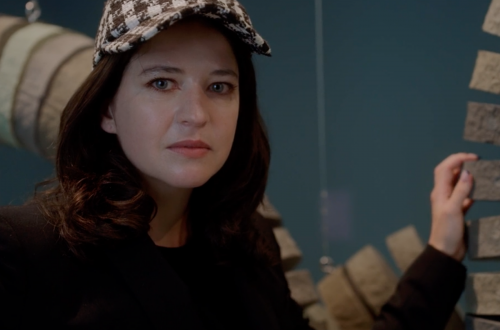
Material as Memory: A Conversation with Nika Neelova
Oktober 17, 2025
Vom Sichten und Finden: Stefanie Pirkers kuratorische Praxis am FOTOHOF
Juli 22, 2024

